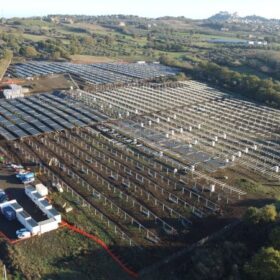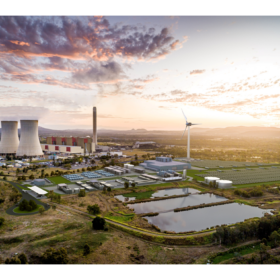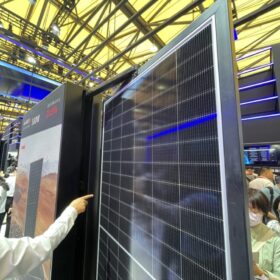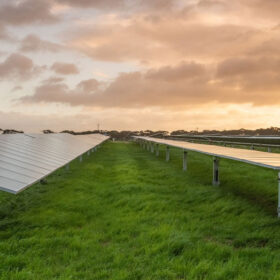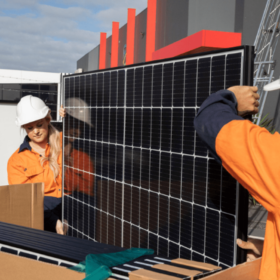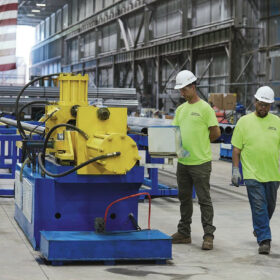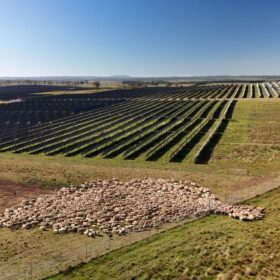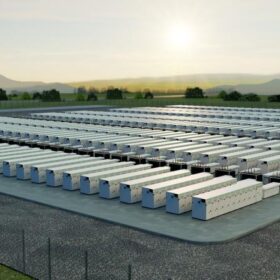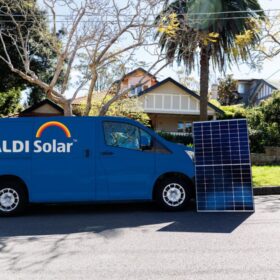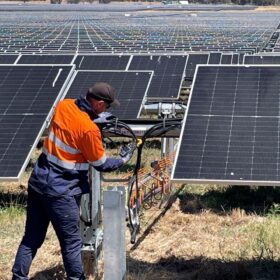Sunrise briefs: Italy bans solar from agricultural land
Also on the rise: Global solar cell and module manufacturing capacity grew by about 550 GW in 2023; Malaysia launches incentive scheme for residential solar; new solar module recycling process; and more.
Queensland boosts Stanwell battery capacity to 1.2 GWh
The capacity of a battery energy storage system to be built alongside the coal-fired Stanwell power plant in central Queensland has received a “mega boost,” increasing to 1.2 GWh as the state government looks to ramp up energy storage capacity to support the transition to renewables.
Aggreko backs modular tech for offgrid solar and storage solution
United Kingdom-headquartered mobile power solutions specialist Aggreko has commissioned a new 4.4 MW solar system and 2 MW battery energy storage system to supply renewable power to Northern Star Resources’ Porphyry gold mining operation near Kalgoorlie in Western Australia.
Longi announces 27.30% efficiency for heterojunction back contact solar cell
The Chinese module manufacturer said the new efficiency record was confirmed by Germany’s Institute for Solar Energy Research (ISFH).
Former PM to chair fund planning 15 GW clean energy portfolio
Former Australian prime minister Julia Gillard has been named chair of a multi-billion renewable energy fund that is aiming to build a 15 GW portfolio of assets including wind, solar, and battery storage over the medium term.
Governments pump millions in to build ‘new energy’ workforce
The federal and state governments are stepping up their investments as they seek to deliver the army of skilled workers required to build the solar and wind farms, rooftop solar, battery storage and transmission infrastructure needed to achieve Australia’s renewable energy and emissions targets.
Weekend read: Shifting supply chains brings own risks
Sourcing solar and energy storage locally will reduce some supply chain risks but it also opens the door to a new set of questions for prospective investors. Here, pv magazine takes a look at the United States market that could provide lessons for Australia as it seeks to build a domestic solar manufacturing industry.
No threat to farm land: just 1,200 square kilometres can fulfil Australia’s solar and wind energy needs
As Australia’s rapid renewable energy rollout continues, so too does debate over land use. Nationals Leader David Littleproud, for example, claimed regional areas had reached “saturation point” and cannot cope with more wind and solar farms and transmission lines.
Akaysha fast tracks 710 MWh of battery projects with new financing
Akaysha Energy has secured $250 million in new financing that will accelerate the development of two large-scale battery projects in Queensland set to add a combined 710 MWh of energy storage capacity to the National Electricity Market.
UNSW researchers warn of surprising TOPCon solar module vulnerabilities
Researchers at the University of New South Wales claim to have identified three TOPCon panel failure types that are absent in PERC products. They explained that these failures may occur when the modules are exposed to high humidity and contaminants before encapsulation.
